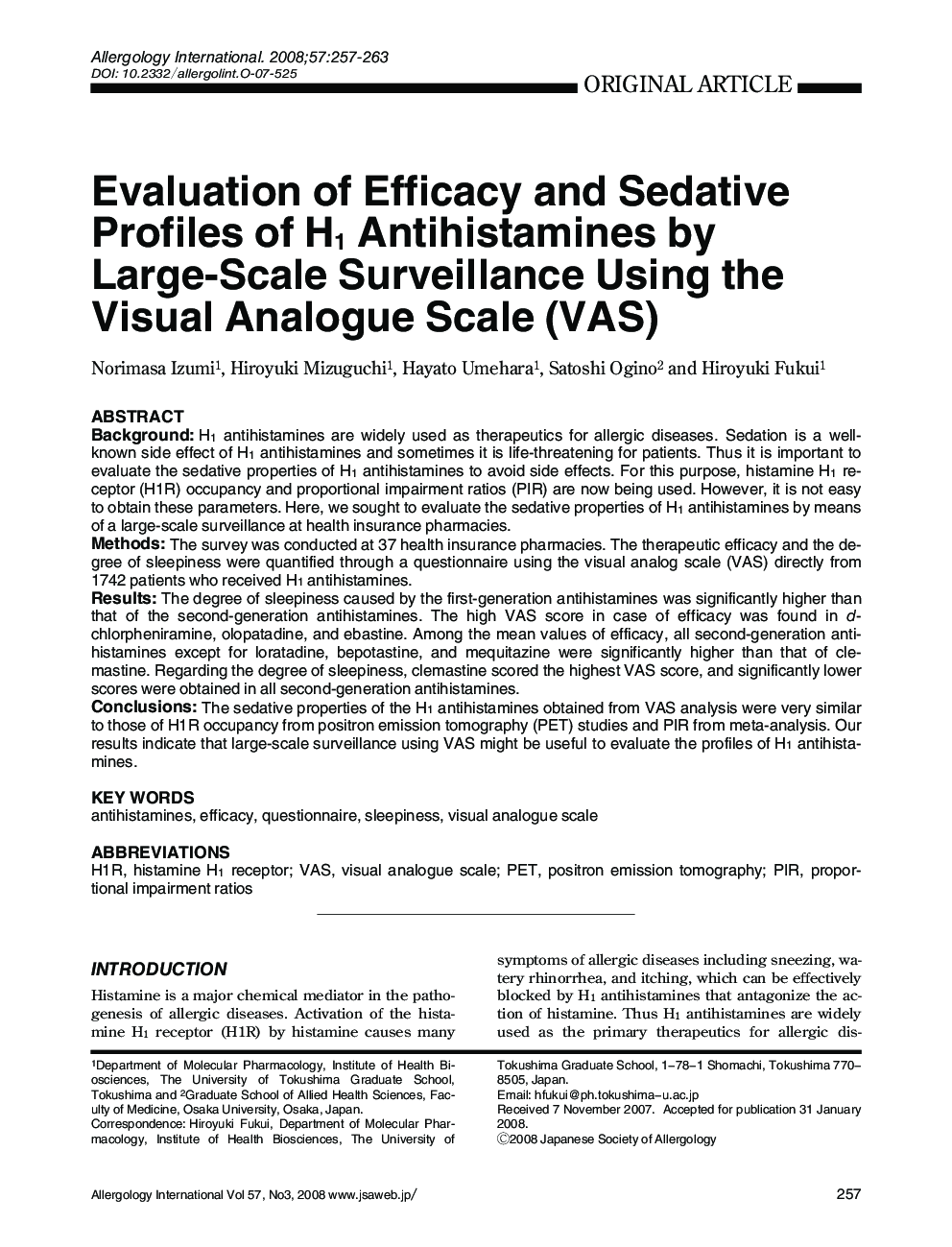| Article ID | Journal | Published Year | Pages | File Type |
|---|---|---|---|---|
| 3341083 | Allergology International | 2008 | 7 Pages |
ABSTRACTBackgroundH1 antihistamines are widely used as therapeutics for allergic diseases. Sedation is a well-known side effect of H1 antihistamines and sometimes it is life-threatening for patients. Thus it is important to evaluate the sedative properties of H1 antihistamines to avoid side effects. For this purpose, histamine H1 receptor (H1R) occupancy and proportional impairment ratios (PIR) are now being used. However, it is not easy to obtain these parameters. Here, we sought to evaluate the sedative properties of H1 antihistamines by means of a large-scale surveillance at health insurance pharmacies.MethodsThe survey was conducted at 37 health insurance pharmacies. The therapeutic efficacy and the degree of sleepiness were quantified through a questionnaire using the visual analog scale (VAS) directly from 1742 patients who received H1 antihistamines.ResultsThe degree of sleepiness caused by the first-generation antihistamines was significantly higher than that of the second-generation antihistamines. The high VAS score in case of efficacy was found in d-chlorpheniramine, olopatadine, and ebastine. Among the mean values of efficacy, all second-generation antihistamines except for loratadine, bepotastine, and mequitazine were significantly higher than that of clemastine. Regarding the degree of sleepiness, clemastine scored the highest VAS score, and significantly lower scores were obtained in all second-generation antihistamines.ConclusionsThe sedative properties of the H1 antihistamines obtained from VAS analysis were very similar to those of H1R occupancy from positron emission tomography (PET) studies and PIR from meta-analysis. Our results indicate that large-scale surveillance using VAS might be useful to evaluate the profiles of H1 antihistamines.
